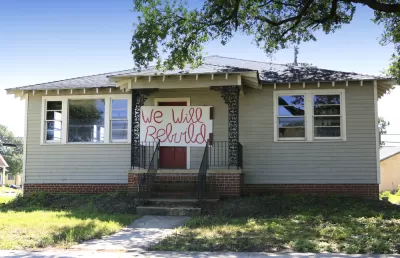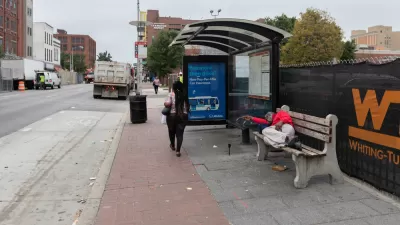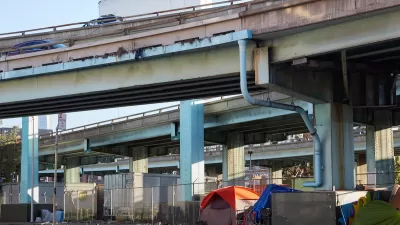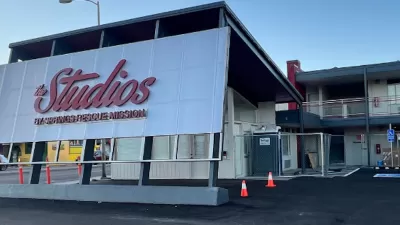Homelessness spiked in New Orleans after Hurricane Katrina. But the city has made substantial progress in providing housing and services to keep people off the streets.

New Orleans has reduced homelessness by 90 percent since 2007, when Hurricane Katrina left more than 11,600 people without places to live. WBUR reporter Jeremy Hobson interviews Martha Kegel, executive director of the non-profit coalition Unity of Greater New Orleans, about which strategies worked best to solve the city's crisis.
Because people continue to lose their homes—thanks, Kegel says, to gentrification and a lack of affordable housing—advocates use a metric called "functional zero," meaning that the number of homeless people never exceeds the number of people being rehoused. New Orleans has achieved functional zero in both veteran and family homelessness.
The basis of their success is a Housing First approach and wraparound services: first, provide people an apartment, and then provide services to ensure their stability and quality of life. Unity also went to Congress to procure a rental assistance fund.
Wraparound services can require comprehensive individual attention, so effectiveness at a large scale requires close collaboration among the Veterans Administration, the Housing Authority, and other organizations. But, Kegel notes:
"This is a very cost-effective approach: compare constantly cycling in and out of jail on charges that wouldn't even be relevant if they had an apartment, that are costing the taxpayers a lot of money … to a relatively small amount of money to pay for some rent assistance."
FULL STORY: How New Orleans Reduced Its Homeless Population By 90 Percent

Planetizen Federal Action Tracker
A weekly monitor of how Trump’s orders and actions are impacting planners and planning in America.

San Francisco's School District Spent $105M To Build Affordable Housing for Teachers — And That's Just the Beginning
SFUSD joins a growing list of school districts using their land holdings to address housing affordability challenges faced by their own employees.

The Tiny, Adorable $7,000 Car Turning Japan Onto EVs
The single seat Mibot charges from a regular plug as quickly as an iPad, and is about half the price of an average EV.

Seattle's Plan for Adopting Driverless Cars
Equity, safety, accessibility and affordability are front of mind as the city prepares for robotaxis and other autonomous vehicles.

As Trump Phases Out FEMA, Is It Time to Flee the Floodplains?
With less federal funding available for disaster relief efforts, the need to relocate at-risk communities is more urgent than ever.

With Protected Lanes, 460% More People Commute by Bike
For those needing more ammo, more data proving what we already knew is here.
Urban Design for Planners 1: Software Tools
This six-course series explores essential urban design concepts using open source software and equips planners with the tools they need to participate fully in the urban design process.
Planning for Universal Design
Learn the tools for implementing Universal Design in planning regulations.
Smith Gee Studio
City of Charlotte
City of Camden Redevelopment Agency
City of Astoria
Transportation Research & Education Center (TREC) at Portland State University
US High Speed Rail Association
City of Camden Redevelopment Agency
Municipality of Princeton (NJ)





























